Marketing has always been an essential element of every profitable business plan, from traditional print advertising to content marketing to influencer marketing to promotions on social media. All are essential for increasing brand recognition, boosting sales, and developing client loyalty. And one of the most successful marketing techniques since the beginning of the internet is email marketing.
Email marketing has evolved as one of the most successful and efficient ways to contact and engage with clients in today’s digital world. Businesses can interact with their audiences in a more intimate and personal way by leveraging emails and providing customized messages that are remembered and encourage action.
So, what is email marketing? How does it function? And what are the most effective tools a marketer may use to assure the effectiveness of its email marketing campaigns?
In this article, we’ll look into the area of email marketing and demonstrate how this effective marketing strategy may help you expand your business and reach your objectives in the most efficient way possible.
What is Email Marketing?
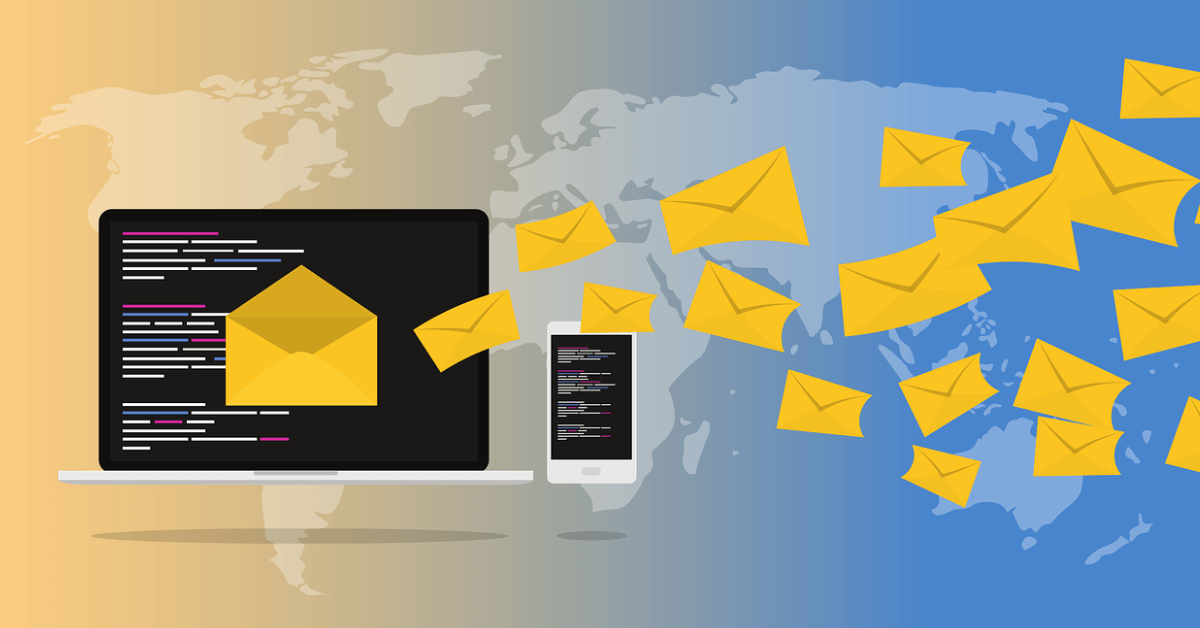
Email marketing is a form of direct marketing and digital marketing strategy that involves sending promotional or informational emails to a group of people (an email list) via email.
Being a powerful marketing channel, email marketing can help businesses reach their target audience, promote their products or services, boost sales and conversions, and most importantly, build relationships with their customers.
With email, you’ll have a direct line to your audience, and you can deliver targeted, personalized messages that drive engagement and sales to your business, as well as share your new products (if you’ve just launched them), deals, and updates with your loyal clients.
Email marketing has been around for decades, but it remains a cornerstone of digital marketing strategies today. Many marketers believe that email marketing is the most profitable and cost-effective direct marketing channel, generating an average ROI (return on investment) of 4000%.
For this reason alone, you should use email marketing as one of your primary marketing channels, if not the primary one, or you’ll be as if you are leaving money on the table to your competitors, which is a (sorry for the word) stupid act to do as a business owner.
But with all these features, email marketing can also be complex, with a wide range of tools and strategies to choose from. In this article, we’ll provide a comprehensive guide to email marketing for beginners, covering everything from the basics of how it works to the best tools for success.
Whether you’re just starting with email marketing or looking to improve your current campaigns, this guide will help you navigate the world of email marketing with confidence.
How does Email Marketing Work?
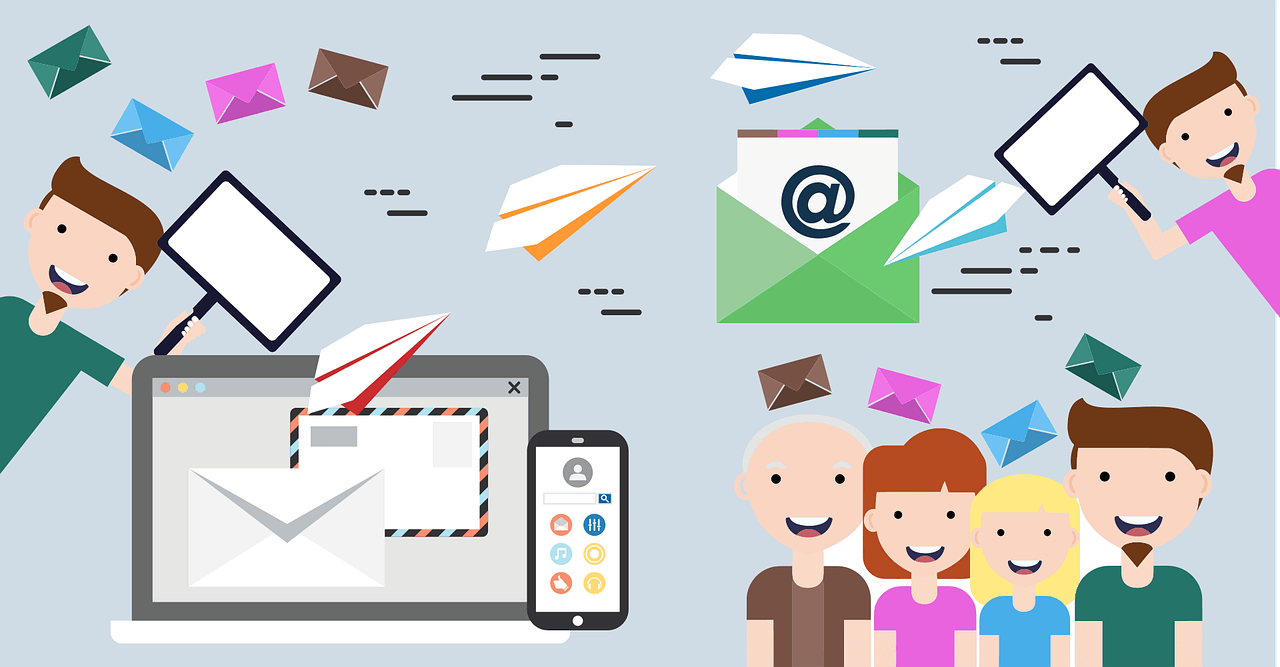
Email marketing is a robust direct digital marketing method that allows businesses to reach out to their audience and deliver targeted emails directly to their inbox.
Email marketing works by building an email list of subscribers (using the lead magnet technique) who have opted in to get knowledge, guides, or free e-books from a certain website.
This list can then be segmented based on various criteria, such as demographics, gender, interests, and behavior, to deliver more personalized and relevant messages to different groups of subscribers.
Once the list is segmented, businesses can use email marketing software to create personalized and engaged email campaigns that include everything from promotional offers to informative newsletters and send them out to their subscribers at the right time for maximum conversions.
Another great feature of email marketing is automation. By leveraging email marketing automation and email marketing automation software, businesses can also set up triggered messages that are sent out automatically based on specific subscriber actions, such as making a purchase, signing up for a free trial, or abandoning a cart.
Overall, email marketing provides businesses with a direct and cost-effective way to engage with their audience and drive results, making it a valuable addition to any marketing strategy.
Why Email Marketing is Important
Email marketing has become an essential component of any modern marketing strategy. One of the primary reasons for its importance is that email marketing is a direct and personal marketing channel of communication with customers.
By sending targeted emails directly to your email list subscribers’ inboxes, you can establish a deeper and more meaningful relationship with your audience. Additionally, email marketing is highly cost-effective compared to other marketing channels such as social ads (Facebook ads, Snapchat ads, and TikTok ads) or search ads (Google ads and Bing ads), allowing you to reach a large number of subscribers with minimal investment.
Another key benefit of email marketing is the ability to track and measure the performance of your campaigns, providing you with valuable insights into what works and what doesn’t, unlike other marketing methods that don’t provide you with such insights.
And finally, with its ability to deliver engaging, personalized, and measurable emails, it gives you a higher conversion rate than all other marketing methods, which will lead to a higher ROI.
With all these features, it’s no wonder that email marketing has become a critical tool for businesses of all sizes and industries to use to achieve their goals.
Pros and cons of email marketing
Email marketing is among the cheapest and the easiest ways to market and grow your business, that’s why it has become a popular marketing channel for businesses of all sizes, allowing them to connect with their audience cost-effectively and directly.
However, like any marketing strategy, email marketing has its pros and cons. Let’s take a closer look at the advantages and disadvantages of email marketing:
Pros
- Targeted marketing: Email marketing allows businesses to segment their subscriber lists and deliver highly targeted messages to specific groups of subscribers. This can lead to higher engagement rates and a better return on investment (ROI).
- Measurable: Email marketing is highly measurable, providing businesses with valuable data on the performance of their campaigns. By tracking metrics such as open rates, click-through rates (CTR), and conversions, businesses can optimize their strategy for better results.
- Automated campaigns: Email marketing software allows businesses to set up automated campaigns that trigger based on specific subscriber actions or behaviors, such as abandoned cart reminders, welcome series, or post-purchase follow-ups. This can help businesses save time and resources while increasing engagement rates.
- Cost-effective: One of the primary advantages of email marketing is its cost-effectiveness compared to other marketing channels. With minimal investment, businesses can reach a large number of subscribers and achieve a high return on investment (ROI).
- Increased brand awareness: Email marketing can help increase brand awareness by keeping subscribers engaged and up-to-date on the latest products, services, and promotions. This can help establish the business as a thought leader in the industry and build trust with subscribers.
- Easy to create and customize: With the help of email marketing software, businesses can easily create and customize email templates that align with their branding and messaging.
- Direct and Personal: Email marketing provides businesses with a natural and personal way to communicate with their audience, allowing them to deliver targeted messages that resonate with their subscribers. This can help build a stronger relationship with customers and improve brand loyalty.
Cons
- Design and spam issues: designing effective emails and avoiding spam filters can be challenging for businesses without the proper expertise. Poorly designed or spammy emails can hurt a business’s reputation and lead to decreased engagement rates.
- Deliverability: One common challenge with email marketing is the issue of deliverability. Emails can end up in spam folders or be filtered out by email providers if they are not sent correctly, reducing the chances of them being seen by subscribers.
- Privacy concerns: Email marketing requires businesses to collect and store personal information, such as email addresses and names, which can lead to privacy concerns. Businesses must comply with privacy laws and regulations to avoid legal issues and maintain trust with subscribers.
- Subscriber Fatigue: Another potential drawback is the risk of subscriber fatigue. Recipients may become overwhelmed or annoyed by too many emails from a business, leading to increased unsubscribe rates and a damaged brand reputation.
- Limited reach: Email marketing is only effective if businesses have a strong and engaged subscriber list. Building a subscriber list takes time and effort, and businesses may struggle to reach new audiences through email marketing alone.
- Risk of unsubscribes: Email marketing can be a delicate balance between staying top-of-mind and overwhelming subscribers with too many emails. Businesses run the risk of losing subscribers if they send too many emails or irrelevant content.
- Resource-Intensive: Email marketing can require a significant investment of time and resources to create compelling content, design effective templates, and manage subscriber lists. This can be a challenge for businesses with limited resources or expertise in email marketing.
Types and Examples of Email Marketing
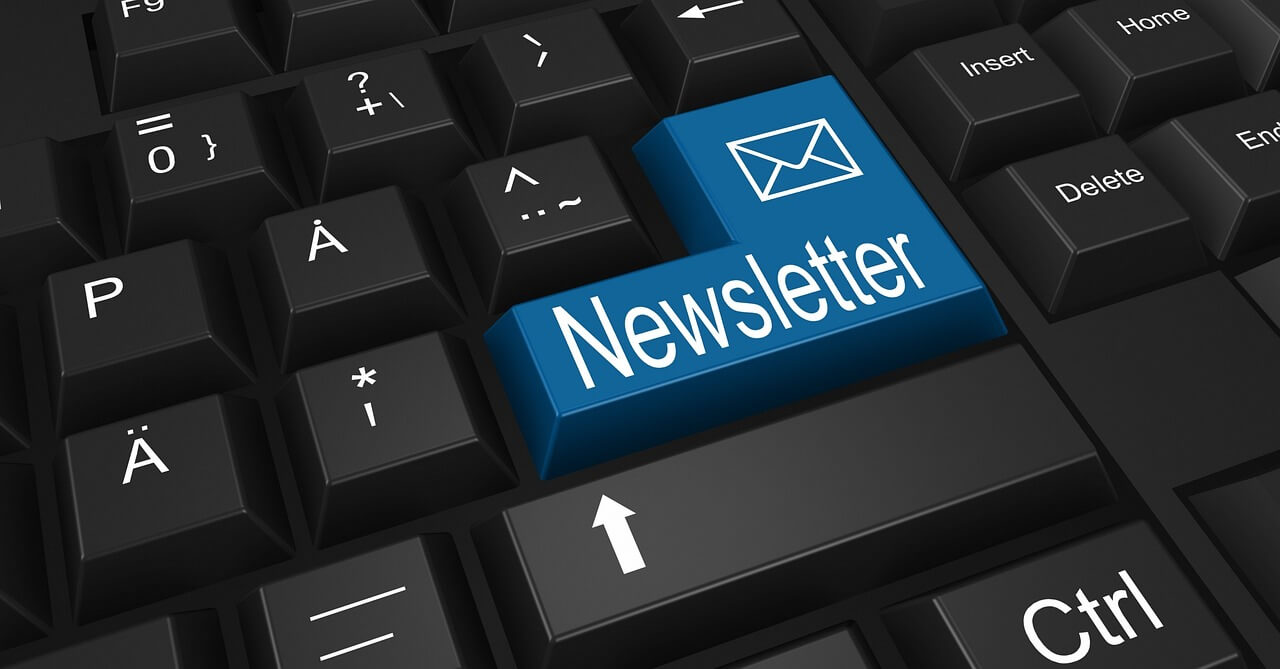
- Promotional Emails: Promotional emails are designed to promote a specific product or service and usually include a call-to-action (CTA) that encourages subscribers to take a specific action, such as making a purchase.
- Abandoned Cart Emails: Abandoned cart emails are sent to subscribers who have added items to their online shopping cart but still need to complete their purchase. They often include a reminder of the items in the cart and a CTA to encourage subscribers to complete their purchases.
- Welcome Emails: Welcome emails are sent to new subscribers to introduce them to the business and provide them with relevant information, such as a welcome discount code, links to the business’s social media profiles, or free guides or ebooks.
- Re-engagement Emails: Re-engagement emails are sent to inactive subscribers in an email list to re-engage them with the business. They may include a special offer or incentive to encourage subscribers to interact with the company again.
- Event Invitation Emails: Event invitation emails are sent to subscribers to invite them to a specific event, such as a product launch, webinar, or in-person event.
- Survey Emails: Survey emails are sent to subscribers to gather feedback and insights about the business’s products or services. They often include a link to a survey and a promise of a reward for completing it.
- Newsletters: Newsletters are a popular type of email marketing that keep subscribers informed about the latest news, trends, and products in the industry. They are typically sent regularly, such as weekly or monthly.
RELATED: Want more in-depth information about different types of email marketing? Check out this article.
What are the best Email Marketing Services?
There are many email marketing tools available on the market, but only a few of them are capable of providing the best services and features for the best prices. These are some of the most popular email marketing tools that you can use:
- Mailchimp: Mailchimp is among the most well-known email marketing tools. The platform features an easy-to-use design and a plethora of functionality, including email automation, segmentation, A/B testing, and analytics. Mailchimp also integrates with a wide range of other apps and services, making it simple to integrate into your existing workflow.
- Constant Contact: Constant Contact is also another famous email marketing service with an easy-to-use design and a variety of functions. It contains templates that may be customized, segmentation, automation, A/B testing, and thorough statistics. Constant Contact also has an event management tool that integrates with social media platforms.
- GetResponse: GetResponse is an email marketing service that provides a range of features, including automation, segmentation, A/B testing, and detailed analytics. It also includes a landing page builder and integrations with popular platforms like WordPress, Shopify, and PayPal.
- SendX: SendX is an email marketing service that provides a range of features, including automation, segmentation, and A/B testing. It also includes a drag-and-drop email builder and integrations with popular platforms like Shopify, WordPress, and Salesforce.
- ActiveCampaign: ActiveCampaign is an email marketing service that provides a range of features, including automation, segmentation, and A/B testing. It also includes a visual automation builder and integrations with popular platforms like Shopify, WordPress, and Salesforce.
- Omnisend: Omnisend is an email marketing service designed for e-commerce businesses. It provides a range of features, including automation, segmentation, and A/B testing. Omnisend also includes a visual automation builder and integrations with popular e-commerce platforms like Shopify, WooCommerce, and BigCommerce.
- Drip: Drip is an email marketing service designed for e-commerce businesses. It provides a range of features, including automation, segmentation, and A/B testing. Drip also includes a visual workflow builder and integrations with popular e-commerce platforms like Shopify and WooCommerce.
- ConvertKit: ConvertKit is a popular email marketing service designed for bloggers and content creators. It provides a simple, clean interface and features like automation, segmentation, and A/B testing. ConvertKit also offers integrations with many popular platforms, including WordPress, Shopify, and Teachable.
- Sendinblue: Sendinblue is an email marketing service that provides a range of features, including automation, segmentation, A/B testing, and detailed analytics. It also includes a landing page builder and integrations with popular platforms like WordPress, Shopify, and Salesforce.
- AWeber: AWeber is an email marketing service that provides a range of features, including automation, segmentation, and A/B testing. It also includes a drag-and-drop email editor and integrations with popular platforms like WordPress and Shopify.
- MailerLite: MailerLite is an email marketing service that provides a range of features, including automation, segmentation, and A/B testing. It also includes a drag-and-drop email builder and integrations with popular platforms like Shopify, WordPress, and WooCommerce.
What is an autoresponder in email marketing?
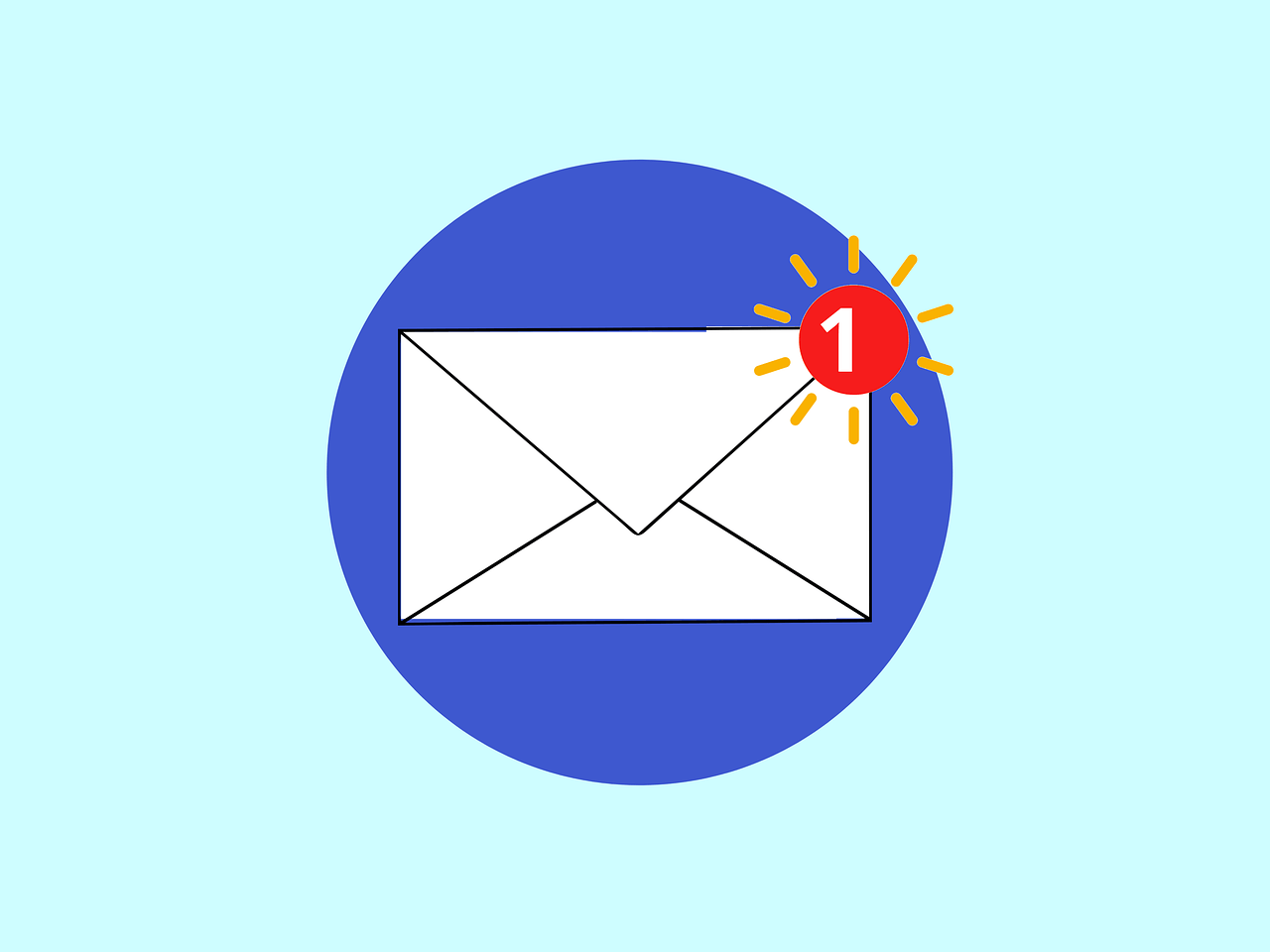
An autoresponder in email marketing is a series of pre-written, automated messages that are sent automatically to your subscribers in your email list based on specific triggers or actions. These triggers could include signing up for a newsletter, making a purchase, visiting a specific webpage, or filling out a form.
Autoresponders are such a crucial tool in email marketing that a lot of digital marketers today can’t run their campaigns without them. They are typically used to deliver a sequence of messages automatically that help build a relationship with subscribers over time.
For example, a welcome series of autoresponder messages could be sent to new subscribers to introduce them to your brand and encourage them to engage with your content the second they’ve joined your email list by adding their emails to your opt-in forms.
Autoresponders can also be used to deliver targeted messages based on subscriber behavior or interests. For instance, if a subscriber clicks on a link in an email, an autoresponder could be triggered to send a follow-up message with more information on that topic.
Autoresponders are a powerful tool in email marketing since they allow you to deliver timely, targeted, and relevant messages to your subscribers automatically. They can help you nurture leads, build relationships, and drive conversions while freeing up time for other important tasks in your business.
Pros and cons of using autoresponders
Autoresponders have many benefits, and they can help you a lot in running your business, but there are also some potential cons to consider whenever you try to use them in your email marketing campaigns.
Here are some pros and cons of using autoresponders in email marketing:
Pros
- Increases revenue: By delivering timely offers and promotions, autoresponders can increase your revenue and help you achieve your business goals more easily, all at the lowest possible cost.
- Improves engagement: Autoresponders can help you build a relationship with your email list subscribers by delivering targeted, personalized, and relevant content to them.
- Provides data and insights: Autoresponders can provide you with data and insights about your audience’s behavior, allowing you to analyze your campaigns and optimize them over time for better performance.
- Nurtures lead: Autoresponders can help you nurture leads and encourage them to take action, leading to increased conversions and sales and boosting your ROI (return on investment).
- Saves time and increases efficiency: Autoresponders allow you to automatically send targeted messages to your subscribers without manually sending each one, helping you free up time for other business-related tasks that will boost your productivity.
Cons
Requires ongoing optimization: Autoresponders require ongoing optimization to ensure that they are delivering the desired results and engaging subscribers effectively.
Can be intrusive: If autoresponders are sent too frequently or at the wrong time, they can be perceived as intrusive or spammy. So consider setting a specific timing for each campaign and making a long delay between them.
It requires planning and strategy: To be effective, sometimes autoresponders require planning and strategy to ensure that they deliver the right messages at the right time, so keep testing until you find the right formula.
Can lead to unsubscribes: If autoresponders are not well-designed or relevant, they can lead to unsubscribes, reducing the size of your email list.
Can feel impersonal: messages sent by autoresponders can sometimes feel impersonal for your subscribers, leading to reduced engagement and lower open rates. To prevent that, consider changing your campaign and using your subscribers’ names, emails, and other information.
Overall, the benefits of using autoresponders in email marketing often outweigh the potential drawbacks, but it’s essential to approach them strategically and thoughtfully to ensure that they deliver the desired results.
RELATED: Want more information on how to create a successful autoresponder campaign? read our full guide on how to use autoresponders from here.
Getting Started With Email Marketing
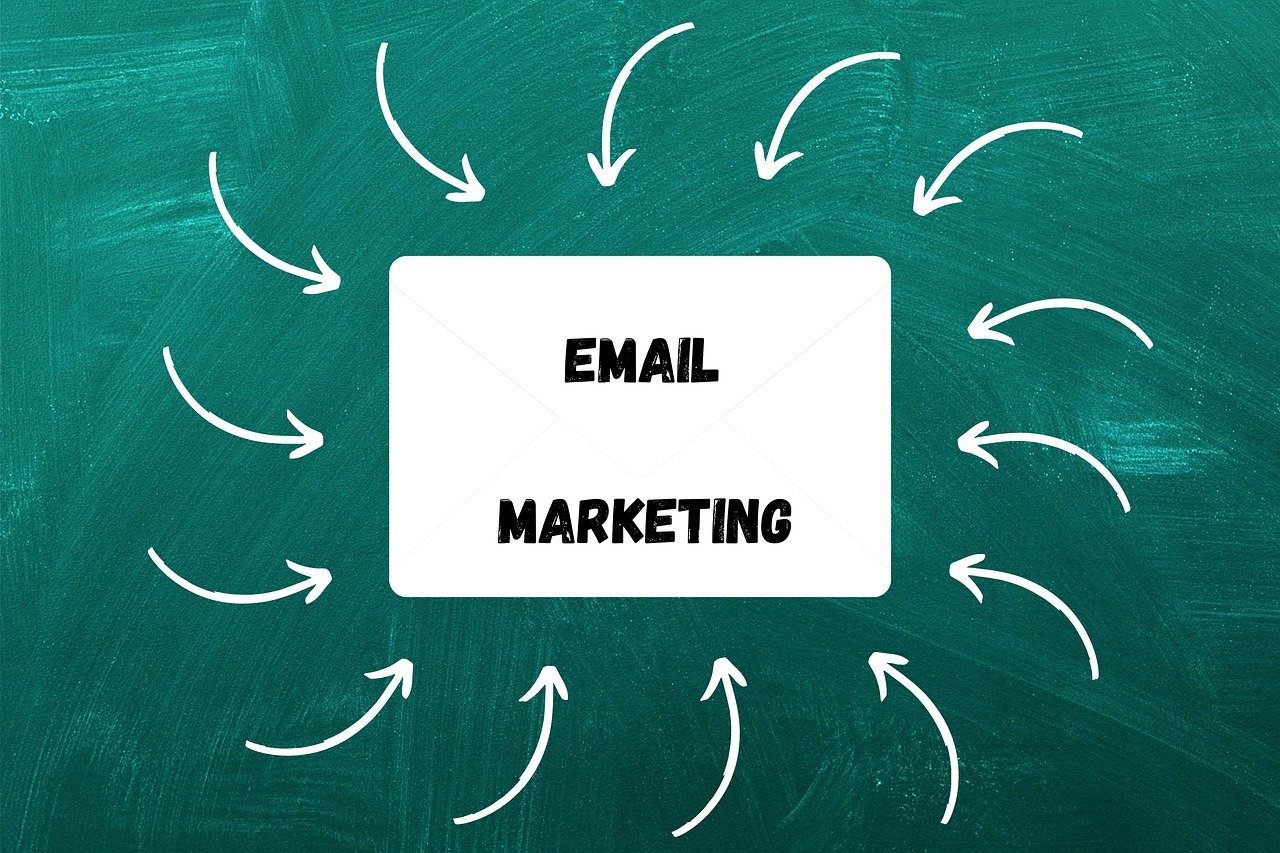
Now that you understand the definition of email marketing, the positive and negative aspects, and the ideal tools for getting started with email marketing, it’s time to start planning your email marketing campaign.
But first, since email marketing is a marketing strategy in which businesses send promotional messages to large groups of people, you must understand the proper procedures to create a successful campaign to avoid wasting time and money and to get the best results.
The processes are simple; if you follow them right, you’ll have your campaign ready to go and can begin working toward your goals.
When you initially begin doing email marketing, the following are the most crucial steps you need to take:
Choose an email marketing service
The very first step when it comes to starting email marketing is to choose an email marketing tool (from the ones that we’ve spoken about earlier in this article).
You can explore all of them, test them, and then choose the one that aligns with your budget, goals, and marketing strategies.
Once you’ve decided on your best email marketing tool and signed up for an account, you can now move on to the next step, which is to start creating your email lists and campaigns.
RELATED: Check out our list of the best email marketing services that you can choose from.
Build your email marketing list
Now that you’ve chosen the best email marketing tool that fits your needs, you need people to send your email to them and to get them, you need to build your email list. This may be accomplished by following four basic steps:
- Identify your target audience: The first step to building an email list is to identify your target audience. Determine whom you want to reach with your email marketing campaigns and what types of content they would be interested in.
- Add opt-in forms to your website: Once you’ve identified your target audience, you can start adding opt-in forms to your website (whether you use WordPress or another CMS). These forms allow visitors to subscribe to your email list by providing their email addresses, names, and, in some situations, phone numbers or other information.
- Offer a lead magnet: To encourage people to sign up for your email list (of course, they will not sign up without anything in return), offer a lead magnet. This can be a free ebook, coupon codes, a full free tutorial on a specific subject, or another resource that provides value to your target audience. Just remember: always provide value to your subscribers.
- Promote your email list: Besides adding opt-in forms to your website, use social media or any other marketing method to promote your email list. Share your lead magnet on social media and encourage your followers to subscribe to your email list.
After following these steps, you’ll have your list ready, and you can start sending emails.
If you keep maintaining your list regularly and keep promoting it the right way, your list will keep growing, allowing you to get more people, send more emails, and, of course, boost your income.
The most important thing to remember when it comes to building an email list is that you always need to get permission from people before adding them to your list.
This can be done, for example, through a double opt-in process where subscribers confirm their email addresses before being added to your list or by adding a small check box inside your opt-in forms that says “I agree to be added to your list”.
Building a quality email list takes time, but it’s worth the effort to create an engaged and interested audience for your email marketing campaigns.
RELATED: If you want a step-by-step tutorial on how to build an email list, try viewing our post on how to create an email list from here.
Create your first email marketing campaign
After building your email list, it’s time to create your first campaign. And to do that, you first need to select the type of campaign you want to send, whether it’s a newsletter, a welcome email, a promotional email, or any other type of campaign that we’ve talked about earlier in this guide.
And to start creating your email marketing campaign, you need to:
Select the type of email campaign you want to send
Selecting the type of email campaign you want to send requires you to consider your goals and the content you want to send to your subscribers. For example, if you want to provide regular updates and build a loyal audience, a newsletter might be a good choice; if you want to inform your subscribers of your new products, a promotional email will do the job; and so on.
Also, choosing a type of campaign helps you understand your audience better and provide them with the right content they need, as well as help you achieve your goal, whether it’s profit, brand awareness, or even growing your business quickly and easily.
Create your campaign
Writing a successful email marketing campaign might be intimidating for some beginners, especially with the many tutorials out there that tell you how to do it but don’t give you the essential points to follow.
We will give you the main points that you’ll have to follow if you want your campaign to be successful:
- Identify your target audience: Before creating your campaign, start by defining your ideal customer persona, or the specific group of people you want to target with your email campaign. Consider their demographics, interests, pain points, and goals. This will help you tailor your campaign to their needs and preferences.
- Choose a compelling subject line: Your subject line should be attention-grabbing, concise, and relevant to the content of your email. Use action words and trigger emotions to entice your subscribers to open your email. But keep in mind: always use a content-related subject line and avoid clickbait.
- Start with a strong opening: Your opening sentence should hook your reader and encourage them to keep reading. Use a conversational tone and speak directly to your reader to make your email more human-like. You need to work on your message’s opening sentence because if the reader loses interest in the first sentence of your message, he won’t keep reading, and you won’t achieve your marketing goal.
- Keep it concise: People have short attention spans, so keep your message simple, subject-related, clear, and to the point. Use short sentences and paragraphs to make your email easy to read and understand. and don’t use spammy links, because they will intercept your messages and send them to the spam folders.
- Use visuals: try to include images, videos, or infographics in your message to break up the text and make your message more engaging. Use alt text to describe your visuals for readers who cannot see them.
- Be personal: When sending your messages, consider using the recipient’s name and other personal information to make your message feel more personalized and human-like. Use dynamic content to show different messages to different segments of your audience based on their interests and behaviors.
- Include a call-to-action (CTA): Make it clear what action you want your reader to take, whether it’s purchasing a product or visiting your site, and include a clear call-to-action that stands out visually. Use action words and create a sense of urgency to encourage your readers to take action.
- Add your personal touch: Consider adding your personal touches, such as your brand logo, a handwritten signature, or a photo of the sender, to make your message more human and unique. especially if you are using ready-made email marketing templates that you’ve taken from anywhere on the Internet. This can help build trust and foster a deeper connection with your audience, as well as keep your messages unique and prevent them from being marked as spam.
- Test and optimize: Test different subject lines, content, visuals, and calls-to-action to see what resonates best with your audience. Use A/B testing to compare different versions of your email and analyze your email metrics to optimize your future campaigns.
- Never spam your subscribers: Always remember to never spam your subscribers by sending bulk emails that are sensitive or sending irrelevant content. Doing this will only affect you and your brand, reduce your message delivery rates, or send your messages directly to spam folders. So, to avoid that happening, always provide good content for your audience so it will be a win-win situation for both of you and them and avoid spammy tactics such as buying email lists or sending unsolicited emails.
RELATED: For more information, you can visit our full guide on how to create an email marketing campaign.
Automate your email marketing campaigns with autoresponders
After we discussed the meaning of autoresponders earlier in our article, it’s time to know how to use this profitable feature.
Automating your email marketing campaigns with autoresponders can help you save time and increase efficiency. Marketers who are not using this feature in their email marketing campaigns are depriving themselves of a lot of features.
Here are the right steps to automate your email marketing campaigns with autoresponders:
- Choose your email marketing platform: There are a lot of email marketing tools that offer autoresponders such as Mailchimp, Constant Contact, and AWeber (or any other tools that we’ve mentioned before), Choose one of them that offers autoresponder plans that fit your marketing plan and your budget.
- Define your trigger: Decide on the trigger that will initiate your autoresponder campaign. This could be when someone signs up for your email list, makes a purchase, visits your website, or fills out a specific form.
- Create your content: Create your email content ahead of time. This could include a newsletter, a welcome message, a thank-you message, or a series of follow-up messages.
- Set up your autoresponder: Set up your autoresponder in the email marketing platform that you choose in the first step. This will typically involve selecting your trigger, setting up your content, and scheduling your messages to be sent automatically.
- Test and optimize: after setting up your autoresponders, test your autoresponder campaign to make sure everything is working as planned, analyze your email metrics to see how your audience is responding to your messages, and optimize your campaign accordingly.
By automating your email marketing campaigns with autoresponders, you can save time and streamline your communication with your audience. Just remember to keep your content relevant, valuable, and engaging to keep your subscribers interested and loyal to your brand.
RELATED: Check out our step-by-step guide on how to set up your autoresponder.
FAQs
Because web hosting is such a large subject, we’ve created a list of commonly asked questions and sought to offer brief answers:
Is email marketing dead?
No, email marketing is not dead. It continues to be one of the most effective and profitable digital marketing channels for businesses of all sizes. According to Statista, the worldwide e-mail marketing business was estimated at around 7.5 billion US dollars in 2020, with the amount expected to rise to 17.9 billion by 2027.
Also, email marketing boasts an average return on investment (ROI) of between $36 and $43 for every $1 spent. Simply put, you invest a dollar and receive in return between 36 and 43 times as much from it.
According to statistics, targeted email campaigns and list-segmented emails generate from 36% to 43% of email marketing ROI. It is therefore one of the most cost-effective marketing methods for attracting and connecting with your audience effectively.
What is b2b email marketing?
B2B (business-to-Business) email marketing is the activity of advertising goods or services to certain other businesses through email campaigns. Unlike B2C (business-to-consumer) email marketing, which targets individual consumers, B2B email marketing is focused on building relationships and driving sales within a business-to-business context.
B2B email marketing campaigns can take many forms, such as newsletters, promotional offers, event invitations, and more. They often utilize targeted messaging and personalization to speak directly to the needs and interests of the recipient, and they may include a clear call to action (CTA) to encourage further engagement.
Effective B2B email marketing requires careful planning, research, and execution to ensure that your messages resonate with your target audience and help you achieve your business goals. By creating compelling content, segmenting your email list, and optimizing your campaigns for engagement and conversions, you can build strong relationships with your B2B customers and drive long-term business success.
What is Email marketing lead generation?
Email marketing lead generation is the process of attracting and collecting new clients for your business using email campaigns. Email marketing may help you increase brand awareness, build reputation, and drive conversions by sending important and relevant information right to your target audience’s mailbox.
Businesses often build focused and engaging campaigns that give value to the clients, such as a free guide, free webinar, or free consultation, to generate leads using email marketing campaigns. These campaigns may contain a clear call-to-action (CTA), such as a sign-up form or landing page, to entice the receiver to take more action and interact with your company.
Creating successful email marketing lead-generation campaigns necessitates careful planning, study, and execution to guarantee that your emails reach your ideal customers and help you meet your business objectives. You can attract new leads, create connections, and grow your company over time by providing appealing content, segmenting your email database, and optimizing your campaigns for engagement and conversions.
How to be an email marketing specialist?
To become an email marketing specialist, it is important to develop a strong understanding of email marketing best practices and tools. This may include learning about email marketing software such as Mailchimp, Constant Contact, and Aweber, list-building strategies, segmentation and personalization techniques, and campaign optimization tactics.
Building experience through hands-on practice and experimentation can also help hone your skills and develop your expertise. Additionally, staying up to date with industry trends and continuing education through courses and certifications, or by following our tutorials can help you stay ahead of the curve and stand out as a skilled and knowledgeable email marketing professional.
Networking with other professionals in the field and seeking out mentorship and guidance can also be valuable in building your skills and advancing your email marketing career.
Is it good to Buy an email list for email marketing?
No, it is not a good idea to buy an email list for email marketing. It is considered a violation of most email marketing platforms‘ terms of service, and it can lead to serious consequences for your business, including account closure, legal action, and damage to your reputation.
Purchasing an email list for email marketing is often ineffective because the people on the list have not permitted their information to be shared and they may not be interested in the products or services you are promoting. Even if they gave their permission, their emails are often outdated, inactive, or fake.
This can result in high bounce rates, low open and click-through rates (CTR), and even spam complaints, which can harm your sender’s reputation and make it more difficult to reach your target audience in the future.
Instead of buying an email list, it is better to focus on building your list of subscribers through targeted lead-generation strategies, such as offering valuable content, incentives, and opt-in forms on your website or your social media accounts.
By building a list of engaged subscribers who have permitted you to contact them, you can create more effective email campaigns that drive results for your business with minimum effort.
Does Email Marketing Work in Australia?
Yes, email marketing can be a highly effective marketing strategy for businesses in Australia. Like many other countries, Australia has a high rate of email usage, with over 90% of adults checking their email at least once a day. This presents a valuable opportunity for businesses to connect with their target audience and drive engagement and conversions through targeted email campaigns.
However, it is important to note that email marketing success in Australia, as in any other country, depends on a variety of factors, including the quality of your email list, the relevance and value of your content, and the effectiveness of your email design and messaging.
It is also important to comply with local laws and regulations, such as the Spam Act, which sets out rules for sending commercial electronic messages in Australia.
By following the best practices for email marketing and tailoring your campaigns to the specific needs and interests of your Australian audience, you can achieve great results and grow your business through this powerful marketing channel.
Does Email Marketing Work in Pakistan? What are the Email marketing services in Pakistan?
Yes, email marketing can also be an effective marketing strategy for businesses and individuals in Pakistan, especially when considering the country’s rapidly growing digital landscape.
Also, with a large and diverse population that is increasingly connected online, email marketing can be an effective way to reach and engage a wide range of potential customers inside the country.
As for the services themselves, there are several email marketing services available in Pakistan, including both local and international providers. Some popular options include MailChimp, AWeber, GetResponse, and Constant Contact. These services offer a range of features and tools to help businesses located in Pakistan or even international businesses that target Pakistani audiences create and send effective email campaigns, as well as track and analyze their performance.
When using email marketing in Pakistan, it is important to keep in mind local laws and regulations, such as the Prevention of Electronic Crimes Act, which regulates the sending of spam and other unsolicited messages.
Finally, By following best practices for email marketing, such as building a targeted and engaged email list, personalizing your messages, and providing valuable content, businesses in Pakistan can effectively leverage this powerful marketing channel to reach and engage with their target audience.
What is email marketing, and why is it important?
Email marketing is a strong marketing channel that combines direct marketing with digital marketing by sending either commercial or non-commercial messages to a group of individuals via email using one of the email marketing software.
Email marketing is very important since it allows businesses to reach their audience directly and build relationships over time, leading to increased engagement, conversions, and revenue.
How often should I send emails to my subscribers?
The frequency of emails can vary depending on your audience, industry, and goals. Generally, it’s best to find a cadence that works for your subscribers, whether that’s daily, weekly, or monthly. However, it’s essential to avoid overloading them with too many emails, as this can harm your brand’s reputation as well as lead to subscriptions. For more information, You can read our full guide on what is the best time to send your email campaigns.
What should I include in my email campaigns?
Your email marketing campaigns should contain any materials that are relevant to your brand and suit the requirements and interests of your readers, which can add value and establish a strong relationship between you and them.
These materials might be coupons, blog entries, newsletters, infographics, and any other pieces of content that you can provide that can help your audience solve their problems. if you want to create a successful email marketing campaign that converts, check out our step-by-step guide on how to create email marketing campaigns.
How can I grow my email list?
There are various methods for growing your email list, including creating valuable lead magnets, delivering special content or offers, promoting your email list via social media and other digital marketing channels, and optimizing your website and opt-in forms for email signups.
What is A/B testing in email marketing?
A/B testing, also known as split testing, is the practice of sending two variations of an email campaign to a small subset of your email list to determine which version performs better.
By testing different elements such as subject lines, call-to-action buttons, or images and videos, you can optimize your email campaigns for better engagement and conversions. Check out our full step-by-step guide on how to do A/B testing.
What is a call-to-action (CTA) in email marketing?
A call-to-action (CTA) is a specific directive that encourages your email subscribers to take a desired action, such as making a purchase, watching a video, signing up for a webinar, or visiting a landing page. CTAs should be clear, concise, and prominently displayed within your email campaigns to increase the chances of conversions.
Also, it’s not recommended that you use clickbait (false or misleading headlines) to grab your reader’s attention; it will damage your brand’s reputation, you’ll lose your reader’s trust, and your future emails will be sent to spam folders.
What is email segmentation, and why is it important?
Email segmentation is the process of dividing your email list subscribers into smaller groups based on specific criteria, such as demographics, behavior, or interests.
By segmenting your email list, you can send more targeted and personalized emails that are relevant to each subscriber, leading to higher open rates, boosting engagement, and driving more conversions.
What are some common mistakes to avoid in email marketing?
The most common mistakes that a lot of beginners make and that you need to avoid in email marketing are sending too many emails, using spammy language or tactics, neglecting to optimize for mobile devices, and failing to segment your email list effectively. It’s also essential to provide valuable content and avoid being overly promotional.
What is the best way to measure the success of my email campaigns?
The success of your email campaigns can be measured using several metrics, including open rates, click-through rates (CTR), conversion rates, and revenue generated.
It’s also important to track these metrics over time using tracking software such as Voluum, Redtrack, and ClickMagick and use them to optimize your campaigns for better results.
What is a relationship in email marketing?
A relationship in email marketing refers to the connection and trust that a business or brand builds with its email subscribers over time by sending frequent emails.
Building a relationship with your email list is very important for your brand because it allows you to develop a loyal following and keep your subscribers engaged with your content and offers.
To build a relationship with your email subscribers, it’s important to provide them with valuable and relevant content that meets their needs and interests. This can include exclusive promotions, blog posts, newsletters, and other types of content that provide value and build trust with your audience.
You should also personalize your emails and segment your list to ensure that your messages are tailored to each subscriber’s needs and interests.
Additionally, you should always aim to be authentic, transparent, and consistent in your email campaigns. By doing so, you can establish a genuine connection with your subscribers and build a long-term relationship that benefits both your business and your audience.
How can I ensure that my emails comply with email marketing regulations?
To ensure that your emails comply with email marketing regulations, such as the CAN-SPAM Act, it’s essential to include a clear and conspicuous unsubscribe link, provide accurate sender information, avoid deceptive subject lines or content, and honor opt-out requests promptly.
It’s also recommended that you seek legal advice to ensure that your email practices are compliant with relevant laws and regulations.
How can I ensure that my emails are opened and read by my subscribers?
To increase the chances of your emails being opened and read, it’s essential to use attention-grabbing subject lines (avoid using clickbait), provide valuable content, and optimize your emails for mobile devices. You can also segment your email list to ensure that your messages are tailored to each subscriber’s needs and interests. You can check out our full guide on how to create a successful email marketing campaign.
Conclusion
Lastly, email marketing is a powerful and effective marketing strategy for businesses of all sizes to connect with their audience and drive engagement and sales to boost their income.
By building an email list and using the right tools, businesses can create effective and engaging email campaigns that deliver targeted, personalized messages that resonate with their audience.
From promotional offers to informative newsletters, email marketing can help you achieve a range of marketing goals and build long-term relationships with your customers.
By staying up-to-date with the latest trends and best practices, you can ensure that your email marketing efforts are as effective and efficient as possible, and you can reap the benefits of this powerful marketing channel.
Email marketing can be a powerful tool for you to connect with your target audience and promote your brand. You need to keep working on your campaigns, test new strategies, and most importantly, don’t lose hope if you are new to this field and you are not seeing results.
If you have any questions concerning email marketing, please express them in the comments section below. We appreciate you taking an interest in our article.



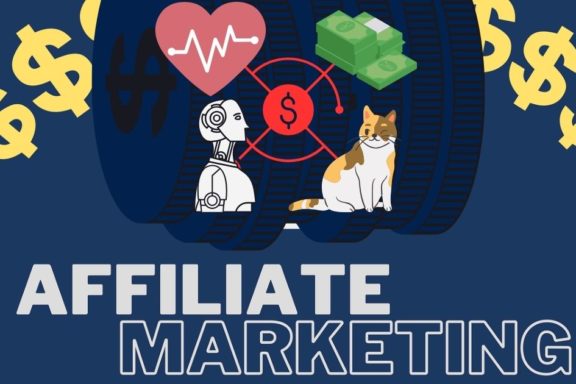

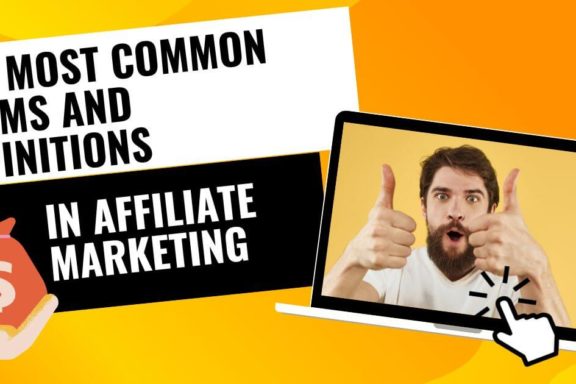
No Comments